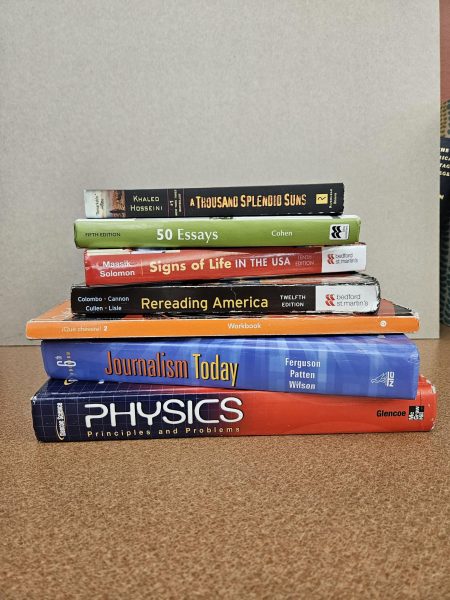Most North students end their labors at 2:10 p.m., but for sophomore Samria Bokieva the real work is just beginning . After school Bokieva is bombarded with homework from her 2 AP classes and other subjects. . Often, she finally collapses from exhaustion around 2 a.m.
Bokieva is not alone. Many students feel the pressure of homework. But, how much homework is too much?
American Psychologist Cooper, H., Robinson believes homework to be a beneficial way for students to practice learning at home, but they find assigning too much homework can be stressful for students.
When students begin to study, the neurons inside their brains have to work in order for them to learn. These neurons become stronger with more homework and practice which is known as neuroplasticity.
According to neuroscientist Suzana Herculano-Houzel, “Learning occurs through the modification of the brain’s neural connections.”
Hence, when feeling stressed, scientists recommend taking a break so the neurons can rest and function properly when working. When a person pushes the neurons too hard, this can result in headaches and lightheadedness.
As students get older their brains start growing. Thus, elementary students should not have the same amount of homework as high school students. Robert J. Marzano, CEO of Marzano Research Laboratory in Centennial, believes that middle school students should have homework limited to less than 25 minutes to complete .
“A more effective activity may be nightly reading, especially if parents are involved,” Leila Fiester, senior consultant to the Campaign for Grade-Level Reading said.
“The benefits of reading are clear: If students aren’t proficient readers by the end of third grade, they’re less likely to succeed academically and graduate from high school.”
High school students should spend approximately two hours on homework according to the National Education Association and National Parent Teacher Association.
In a survey of 100 North students, 75 percent reported spending more than one-two hours doing homework each night.
According to Teach.com and U2 Inc. U.S. high school students spend, on average, six hours a week on homework
The amount of assigned homework varies by country.
Russia spends the most amount of time on weekly homework clocking in at 9.7 hours a week.. Meanwhile, other countries such as South Korea have the lowest weekly amount at only about three hours of homework. Though this might seem low, it is important to know that after day school, many students attend private tutoring lessons until around 10 p.m..
“I think that homework really shouldn’t be allowed because half the time I finish our work in class,” sophomore Ava Waller said. “It literally stresses and drains me mentally.”
Some students might argue homework is a good way to study for quizzes and tests, but Mollie Galloway, PhD, associate professor of educational leadership at Lewis & Clark College in Portland disagrees.
“I think there’s a focus on assigning homework because [teachers] think it has these positive outcomes for study skills and habits,” Galloway said. “But, we don’t know for sure that’s the case.”
Students enrolled in AP classes typically have more homework than students in regular classes.
“The difference is in both scope and amount in AP physics,” physics teacher Jayendra Patel said. “The only way to get used to the type of problem is to go through problems enough to see every possible combination in general physics less homework but every bit of homework is necessarily every problem counts as an example that they could see on the tests. I couldn’t possibly put them on the tests, so I like to see the kids try a little bit of everything on the homework.”
The amount of homework given varies between courses and teachers as well.
“I give them a chance to finish their homework in class more times than not,” social studies teacher Joseph Fox said. “I am a firm believer in students enjoying their after school activities without worrying about extra work outside of the classroom. The expectation is that my students make the most of their class time to work when I give them work to do, and then I am there to answer any questions they may have.”
Time management is a factor for many students – especially if they are involved in extracurricular activities or have part-time jobs. 68 percent of North students surveyed report they do not have time after school to do homework.
Some teachers try to minimize the amount of homework they give students knowing students have other obligations.
“I try to allow students time to work in class so that I can answer questions on the work,” English teacher Jodi Patel said. “This is not to say that I never assign homework, but I intend for it to be in manageable chunks so that a student who has adequate time management skills and whose reading/writing skills are strong enough to succeed in the class should not be overwhelmed.”
As students study for unit assessments or final exams, they are inundated with reviewing the necessary materials. Though some students use flashcards, many teachers recommend using past homework assignments as a way to study. s recognize these questions when taking a test.
“I always find homework to be good practice because, at least in my subject, it allows them to find evidence and to remember their content since they would be working with it more in depth,” English teacher Samantha Moffett said.






